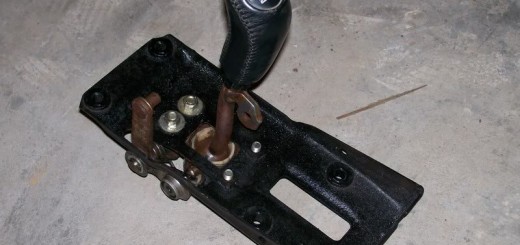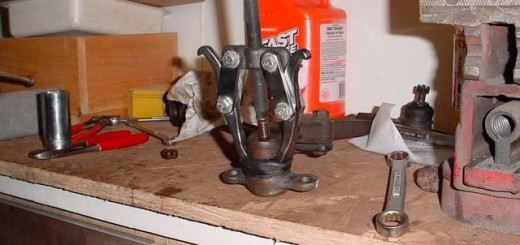Special thanks to Bill Wotschak (billwot) on the message board, and Joseph Obernberger.
The 3SGTE Toyota ECU uses the Turbo VSV to control the amount of boost pressure the Turbo can produce. When the Turbo VSV is not energized (by 12 volts from the ECU), the turbo can build up to 7 PSI (basically whatever the wastegate spring will allow), then the wastegate opens (spring pressure release point met), and the pressure will be maintained. When the ECU energizes the Turbo VSV, it allows the actuator to bleed pressure, and boost will rise to the maximum (up to 11.8 PSI). With the Turbo VSV de-energized, the wastegate is not fully open until you reach 7 PSI. (Thanks Bill)
The Turbo VSV is a dual stage boost controller. It has an on and off position.
Off indicating that the ECU finds one or more of these values to be false.
A: Engine is warm (coolant temp sensor shows good temps in the head)
B: Air temp outside is not too cold (AFM temp sensor shows above 32F)
C: There is positive manifold pressure (boost). (ECU compares the AFM reading with the RPM, it does not get it from the boost pressure sensor)
D: Most importantly, that the engine not knocking (knock sensor functioning, and not finding problems)
This means that you can hook a 12 volt light bulb or LED light in this 12 volt line, and visually see when the ECU has the Turbo VSV on, and off. This will show you that the ECU has not or has found problems with one or more of the statements listed above.
This modification is useful for those who have disconnected the Turbo VSV in that it will show you when the ECU has turned it off (ECU has found problems with the car). People who have disconnected the VSV (in order to run more boost with a Manual or Electronic Boost Controller) have lost this function of the ECU.
The main benefit of this modification is that it allows the user to see when the stock ECU is detecting knock.
This entire cost of this mod is $2.00 for the LED, and a few dollars for some 18-22 gauge wire. You’re probably gonna need a BGB with the electrical diagram, or you can possibly use the pinout here…. SW20 3SGTE PINOUT
Here are the parts needed. Some 18-22 gauge wire, and 1 or 2 12 volt lights or LEDs with resistors built in. The LEDs I bought cost $1.99 each at Radioshack. This is how to hook up the LED. (NOTE: You can use just regular 12v lights, in this case, either wire can go to positive or negative, they are not directed like LED lights are) 
Alway disconnect the car battery before working on any electrical project. For the TVSV, go to the ECU in the rear trunk, and locate plugs A and B that connect to the bottom of the computer.
Next you want to find the plugs on the pinout, and locate the line or lines you want to tap into. 
Now, pop the rear trunk, pop off the Toyota plasti-rivits and pull down the cardboard backed carpet to get to the ECU. Find plugs A and B (match it up with the pinout diagram) 
Make sure you have the correct pin positions before doing any splicing. The plugs may look mirrored depending on how you are looking at it (wire side or pin side), so make sure you have it facing the correct way.
For the TVIS, find a 12v power source (the front kick panel has many such wires, cigarette is a good one), and splice in your TVIS LED positive wire to it. Now, locate plug B at the ECU, and splice your TVIS LED negative to it. Run this wire to wherever you are positioning your TVIS LED.  For the TVSV, find Plug A and use the wire connected to pin 12 or 13 (doesn’t matter which), and splice your TVSV LED positive wire to it. Now locate plug B and splice your TVSV LED negative wire to it. Run this wire to wherever you are positioning your TVSV (knock) LED.
For the TVSV, find Plug A and use the wire connected to pin 12 or 13 (doesn’t matter which), and splice your TVSV LED positive wire to it. Now locate plug B and splice your TVSV LED negative wire to it. Run this wire to wherever you are positioning your TVSV (knock) LED.

Once you have the wire (or wires) hooked to the ECU, feed the line through the rubber grommet into the engine bay (tape the wire to a coathanger, and push through). Then feed the line to the cabin by pulling up the carpet behind the drivers seat, poking a coathanger through the rubber grommet, and attatching the wire to the coat hanger with some more tape, then just pull through. Once down with that, run the wire down the door sill under the carpet there, or under the middle armrest past the shifter (don’t let it get caught in the shifter mechanism). We pulled the door sill plastic, and the plastic panel under the steering wheel to help feed the lines where we wanted them to go. 
Here’s how we temporarily mounted the lights. The green LED is lit, but you can hardly tell with the flash. 
This documentation in no way replaces the Toyota MR2 Repair Manuals. The purpose of this content is only to provide supplementary information to fellow MR2 enthusiasts. Midship Runabout and its contributing authors will not be held responsible for any injury or damages that may occur as the result of practicing any of the methods or procedures described within this website. Article and photo submissions are property of the contributing author.


